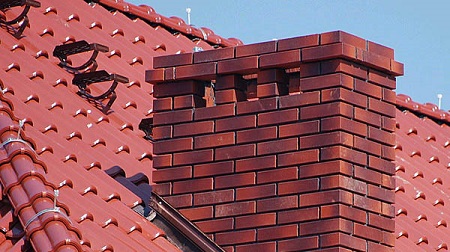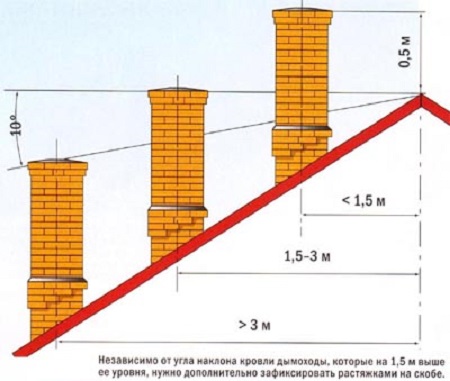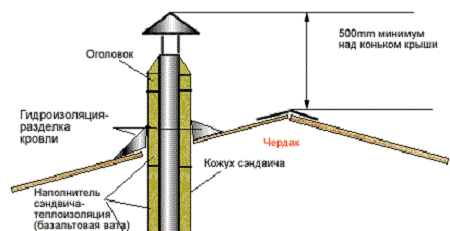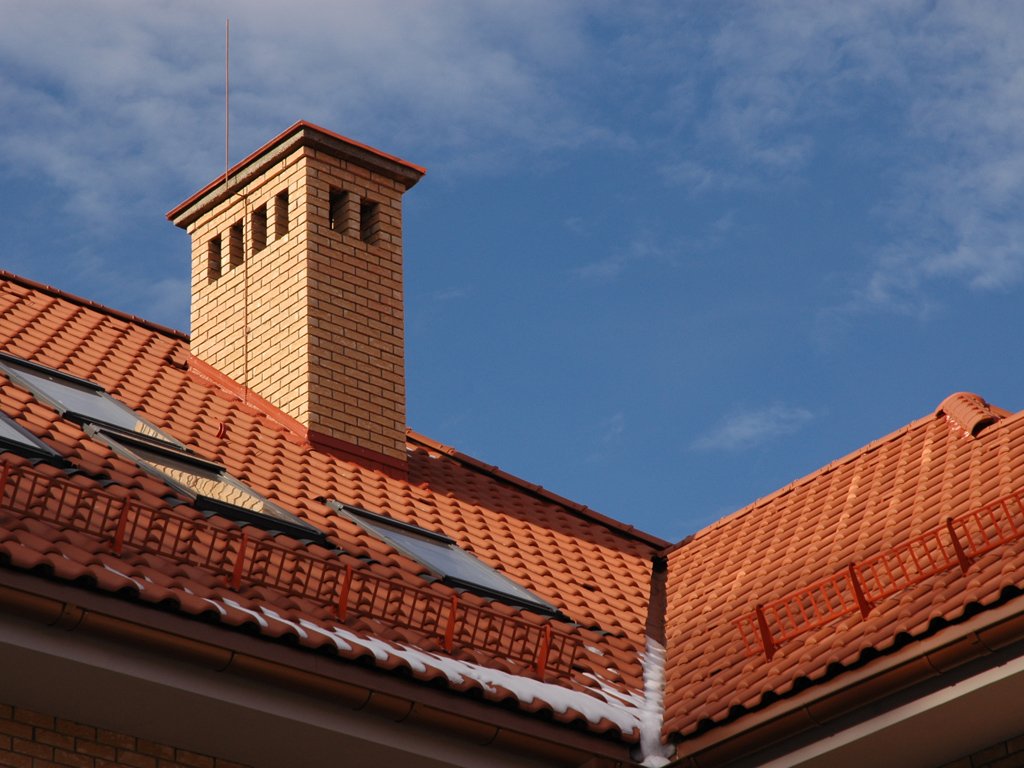A country house is a pleasant luxury, which is a great pleasure to afford. At least, therefore, it is worth carefully considering every detail. One of the elements of the interior, which allow you to create comfort in the house, has long been a fireplace. Its presence in the house not only decorates the room, but also allows you to warm up on long winter evenings. At the same time, it is often he who is responsible for the fire. Most often due to improper chimney design, without which the normal functioning of the fireplace is impossible.
You can build a chimney by resorting to the services of specialists. This, of course, will cost a pretty penny, but you will be sure of the result for sure. But for those who, for a second, do not doubt the skill of their hands and strive to achieve everything in this life on their own, we suggest building a chimney with your own hands.
The most important thing is to properly organize the exhaust gas system to protect yourself from unnecessary troubles, as well as optimally distribute the movement of warm air flows that warm the room.
In the event that the chimney is not installed properly, you run the risk of smoke in the room, the smell of burning, back draft of the fireplace and even the spread of fire.
And yet, how to make a chimney with your own hands and not make a mistake? Let's try to figure it out.
Content
A bit of history

In the 90s, brick chimneys were especially popular in the Russian chimney market. They were high-quality, beautiful and functional, and more was not required of them. The most difficult thing was to find a master who was ready to build such a structure correctly. Among the shortcomings of brick chimneys, which are sometimes relevant to this day, they note an uninsulated structure, due to which harmful condensate forms. Over time, it corrodes the brickwork of the chimney, and, accordingly, the chimney itself, and work can be started again. In addition, brick chimneys have a fairly heavy weight, and therefore need to build a special foundation. The construction of both the foundation and, especially, the brick chimney is a difficult and time-consuming process, which must be carried out only at a positive temperature. If you want to make yourself a chimney of this type, then you need to think in advance about its location. In general, if you want to build a brick chimney with your own hands, get ready for great difficulties. But the problem with condensate was partially solved by the invention of insulated modern brick chimneys, but the construction of a brick structure still remains a complex, unrepairable and heavy in weight process. Among other things, brick chimneys incur large financial costs, because of which many do not dare to make a choice in their favor.
Gradually, brick and ceramic chimneys began to leave the market leading positions, and a new type of stainless steel chimneys came in their place. Such chimneys are made of quality materials, do not contribute to the formation of condensate and stand out for their unique properties that are not available to their predecessors. And if ceramic chimneys can only be built together with the house, then installing a stainless steel chimney will work fine in an already finished building.The inner surface of the pipe of such a chimney has an ideally smooth structure, which significantly increases its operational characteristics.
New generations of metal structures do not require foundation construction and special weather conditions for their installation. They are easily repaired at any time of the year. And, if the durability of ceramic and brick chimneys depends entirely on the professionalism of the craftsman performing the calculation, then metal - exclusively on the materials used for its manufacture.
The modern chimney market is represented by a number of leaders, such as double-walled stainless chimneys, single-walled stainless chimneys and coaxial.
- Double-walled stainless chimneys are excellent for boilers, fireplaces. Geysers and stoves. They are the most common group, and in their design resemble a sandwich from the inner and outer pipes, between which there is a heater.
- The installation of single-wall chimneys makes sense if they are used to repair or otherwise “plug” brick chimneys, as well as to connect them.
- It makes sense to buy a coaxial chimney to supply air to some types of boilers, as well as to remove smoke. By the device, they resemble double-walled ones, only their inner pipe is needed to divert combustion products, and the space between the pipes is necessary to supply air for combustion.
In Russia, one of the most famous representatives producing chimneys made of stainless steel is Domotekhnika with the trademark Vulcan Chimneys.
The Vulcan chimneys are distinguished by a thick layer of fire-resistant insulation between the inner and outer pipes of 50 mm. As a basis for insulation, the manufacturer of chimneys Vulcan uses ROCKWOOL basalt cotton wool from Denmark, which protects pipes from condensation, cooling and improves the performance of the chimney. The inner wall is a stainless steel heat-resistant steel, which is corrosion-resistant, reliable in operation, stable in structure and resistant to environmental influences regardless of climatic conditions.
All these qualities distinguish Vulcan chimneys among other companies. When choosing and buying a chimney, you should pay attention to the models of this manufacturer.
What you need to know when laying a chimney?

It is quite difficult to build a high-quality, reliable and functioning chimney on your own, since this requires maximum attention and accuracy, because it is from these works that the further operation of the chimney, its durability and removal of combustion products will depend.
The height of the chimney depends on the characteristics of the selected boiler, stove or fireplace, as well as the diameter of the pipe.
In addition, the installation of the chimney requires such a preceding stage as design. It involves the fulfillment of a number of conditions:
- The pipe laid in a heated room is not insulated, but 60 cm before the location of the ceiling, a sandwich-type insulation device is installed. Existing building codes state that laying through uninsulated pipes is prohibited. Moreover, the channels that pass through the heated attics must also be insulated, for example, with “sandwiches”.
- The height of the chimney (chimney) should not be less than 5 meters.
- The design and installation of chimneys involves the stage of selecting characteristics (for example, diameter, height and traction force) subject to the following conditions: the higher the pipe, the higher its draft. It is necessary to observe the optimality of this ratio, because if the cross-section of the pipe is small, the system will "choke" with smoke, and if it is too huge, the draft will decrease.
- An important condition: the harmony of geometric proportions between the height of the pipe, the ridge of the roof and other parts of the system (for example, ventilation ducts at home).
- The joints of structural elements should be placed below or above the floor lintels, and should also be open for easy visual viewing. This will help you in the future with the operation of the chimney.
- At intervals of 1.5 - 2.5 meters along the entire length of the chimney pipe, it is necessary to fasten the pipe to the wall using clamps. Similar fastenings are made in the corner bends of the pipe. A pipe protruding more than 1.2 meters is mounted on the roof thanks to special extensions.
- When performing installation work, a mandatory requirement is the implementation of fire safety rules, which state that all wooden elements that are adjacent to the place of installation and the surfaces must be treated with special flame retardants, their insulation with non-combustible materials will not be superfluous. Particular attention in this case requires a place where a “sandwich” is laid through the ceilings, and a place where they go onto the roof.
The aesthetic side of the chimney
Installation of chimneys requires not only the proper conduct of work, but also a preliminary selection of the appearance of your chimney.
The modern chimney market allows us not to dwell on the options that are familiar to us, but to choose such a beautiful appearance that would not only allow the device to function well, but also warm the soul. For example, you can diversify your chimney with special reflective screens and galvanized metal pipes, which will undoubtedly please high-tech fans. The wall along which the chimney pipe is located inside can be faced with unusual ceramic tiles with intricate patterns. The outer part of the chimney pipe is coated with galvanized iron to make it look beautiful and painted in your favorite color using enamels that are heat-resistant to high temperatures.
The tip of the iceberg

The height of the chimney in any situation will depend on the configuration of the roof. In the case when the distance from the roof ridge to the pipe does not exceed 1.5 meters, the height of the chimney (pipe) should be at least 50 centimeters above the level of the ridge. If the distance of the pipe from the ridge does not exceed three meters, but more than 1.5, then the height of the chimney should be greater than or equal to the height of the ridge. With a distance of three meters, the height of the pipe is defined as a line drawn at an angle of 10 degrees to the horizon from the roof ridge. Above a flat roof, the height of the chimney usually rises by less than 120 centimeters.

In case of elevation of the pipe by more than 1.5 meters, it will be necessary to carry out additional pipe insulation using brackets and extensions.
The rules for the operation of heating devices state that a reflector, cone and bend to the top of the chimney pipe are prohibited. He must remain open. Chimneys for gas boilers only in this case will function according to their characteristics.
DIY chimney. Mounting
Most often in practice, a dual-circuit design is used. For this simple reason, let's look at the installation process of just such a system.
Installation is made from the bottom of the structure to its top, i.e., away from the heating facilities in the room, directly to the chimney itself. In this case, each subsequent pipe link is inserted into the preceding section, this allows you to provide protection for the structure from moisture in it. For additional protection, a sealant with an operating temperature of about 1000 can be used.
Working joints are molded with special clamps, along the laying line, brackets are installed along the laying line after 1.5-2 meters to secure the pipe. Separate horizontal sections of the structure should not exceed 1 meter and should not touch nearby communication elements (gas pipes, electrical wiring, etc.).
Do-it-yourself chimney also requires that the working channels are placed along the walls of the building or internal partitions, manufactured and non-combustible materials.Allowed the location next to the insulated structure in the form of a pipe, with its special insulation.
Chimneys for gas boilers
Things are slightly different in the area where you need to do not just a chimney with your own hands, but to figure out how to do this for a gas boiler.
Such chimneys are divided into two types:
- Domestic;
- External side.
The standard section is round, usually with a chimney diameter of 130 mm. Most often, stainless steel is chosen as the material, because high temperatures and aggressive acid condensate have a tough effect on the inner surface of the chimney. That is why chimneys for gas boilers are different from all the others. In some cases, owners prefer to use materials such as ceramics, heat-resistant glass or asbestos-cement pipe.
The installation of chimneys in this case depends on the design of the boiler. DIY chimneys for gas boilers must be certified by the gas service. Otherwise, they will not give permission to operate the gas boiler. And for the operation of the boiler without permission, you face a large fine.
Chimney Care
Do-it-yourself chimney requires not only proper installation, but also subsequent care.
To do this, it is enough to conduct an inspection twice a year (at the beginning and end of the heating period), checking the draft quality, integrity and tightness of the seams and joints of individual links, as well as periodically cleaning it from soot that has settled on the inner walls.


Alas, no comments yet. Be the first!